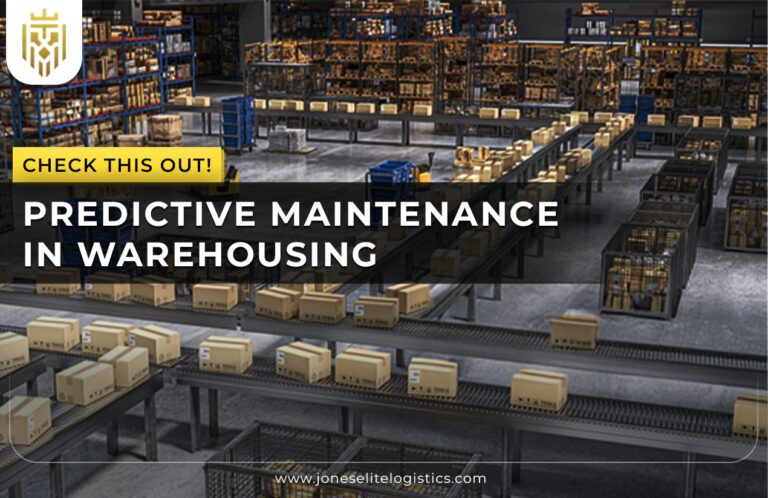Sustainable Supply Chain Management:
The 1980s witnessed the naming of supply chain management by Keith Oliver, a prominent British logistician, and its widespread implementation worldwide. Industries have immensely benefited from it, saving time and increasing profits. However, the quote ‘When consumed too much, even nectar becomes poison’ stays prominent with everything consumed at every stage, and that includes supply chain management. A factor everyone involved chooses to ignore is its negative impact on the environment, as the methods implemented have degraded the very earth we reside on. Enter ‘sustainable supply chain management’, a potential solution being implemented to solve the crisis we have landed ourselves in. We shall go through it in more detail:
What is Sustainable Supply Chain Management?
Sustainable Supply Chain Management includes the environmental and socially sustainable practices that ensure the processes in it reduce wastage of materials, carbon emissions, and other environmental-based problems. These measures aim to reduce the impact of business operations on the environment while ensuring businesses stay on providing excellence to their customers.

Importance of sustainability in the supply chain:
Sustainability in the supply chain provides more benefits, as businesses can start by lowering their carbon emissions. It pushes them to go further, reducing waste and minimizing energy requirements, ensuring they follow the three core responsibilities: environmental, financial, and social. The benefits of preserving Mother Nature while maintaining the flow of their supply chain management help businesses implement more cost-effective measures and deliver significant cost savings.
Components of Sustainable Supply Chain:
Sustainable Supply Chain has its components that operate differently with the end goal of benefiting everyone involved, from businesses to consumers. The following components are:
Green Supply Chain:
On the surface, both ‘Green’ and ‘Sustainable’ supply chains sound the same, which is not surprising. However, upon closer inspection, one can see that the ‘Green Supply Chain’ only covers environmental responsibility, one of the three core responsibilities of sustainable supply chain management. Green Supply Chain prioritizes bringing eco-friendly practices at each stage of a supply chain, including product design, raw material sourcing, manufacturing, and delivering the products.

Transparent Supply Chain:
A transparent supply chain enables the management as well as consumers to note and verify the origins and flow of materials and their conversion into finished products and their transportation. This ensures companies are not deviating from their promise of delivering goods in the humane and environmentally-accepted way: with transparency and trust.
Circular Supply Chain:
A circular supply chain involves the business strategy of using, reusing, reclaiming, and recovering different articles. Internationally it sustains by managing its products in a closed loop, recycling the resources back into the supply chain. Sustainability in terms of resources, management of resources, less impact on the environment, and stability in the economy and employment are some of the other benefits of such an approach.
Supply Chain Sustainability Statistics:
Some current numbers demonstrate an increasing interest in embracing sustainable supply chains. Businesses that have incorporated sustainable measures revealed benefits such as cost savings, better efficiency, and a gain in reputation. Across the globe supply chain sustainability is said to have a giant impact as shown by the fact that supply chain sustainability is said to cut carbon footprints by 25-30%.
How does the sustainable supply chain work?
Sustainable supply chain management involves the incorporation of the triple bottom line; the environmental, social, and economic bottom lines. This includes obtaining sustainable materials, enhancing shipment and transportation, as well as upholding progressive employee relations.
Collaboration:
Business sustainability cannot be achieved without proper supply chain cooperation. There is a collaboration between companies and their suppliers, customers, and other industries to combine facilities, information, and benchmarks. It improves the efficiency of the undertaking, decreases costs, and avails hit targets of supply chain sustainability.
Advanced Technologies:
IoT, AI, and blockchain are at the center of sustainability for supply chains. This, in India, makes it possible to track movement, make future predictions, and make the supply chain process fully transparent on the current technologies. They assist in minimizing wastage, the efficient utilization of resources, and conformity to green practices.

Establish uniform Standards:
Uniform standards are important for maintaining alternation and responsibility in the sustainable supply chain processes. To ensure that they meet these standards, the Indian businesses integrate the global sustainability frameworks such as the ISO 14001 and the GRI standards. One set of consistent reporting standards helps in monitoring improvements in sustainability practices on an ongoing basis.
Benefits of Sustainable Supply Chain Management:
Some of the competitive advantages linkable to sustainable supply chain management include increased efficiency, cost reduction, and improved image of the business’ brands in the market. They also bring benefits for businesses in terms of reduction in pressures which have to do with environmental effects, compliance, and sustainable operations in the long run.
Brand Loyalty and Reputation:
Sustainable supply chains create long-term relationships and trust between the organization and the consumers. Consumers are becoming more conscious of the environment and expect companies to be responsive to the issue. Companies that incorporate the concept of environmental sustainability in their operations stand a better chance to attract more consumers and the existing ones are more likely to remain loyal to the firm.
Cost Control:
Sustainable supply chains are beneficial in providing cost control through the management of resources as well as the reduction of wastes and reversing of logistics cycles. This association benefits the businesses as they cut their expenses such as power and material costs leading to increased profitability as they support the conservation of the environment.
Reduced Environmental Impact:
Sustainability in the supply chain leads to a drastic decrease in the adverse effects on the environment. By implementing these practices, the companies reduce greenhouse gas emissions, decrease wastage, and encourage the use of green energy sources. It helps to achieve environmental conservation and compliance with the provisions of the rule of law.

Protecting against Reputational Damage:
Sustainable supply chains preclude risks, that may harm corporations’ reputations through maintaining the supply chain accountability to practice ethically and conform to the legal requirements of the environment. Every business with clear and sustainable practices minimizes the probability of getting involved in legal cases, poor customer’ reception, or unfavorable publicity.
Technologies in Sustainable Supply Chain Management:
AI, IoT, and blockchain technologies are effective in the management of a sustainable supply chain. These technologies effectively the process, optimally utilize resources, and make them monitor real-time. They contribute to the adoption of sustainable strategies, decrease the negative effects on the environment, and introduce new changes to supply chains.
FAQs
1) What is Sustainable Supply Chain management?
Sustainable Supply Chain Management includes the environmental and socially sustainable practices that ensure the processes in it reduce wastage of materials, carbon emissions, and other environmental-based problems.
2) How can the supply chain become more sustainable?
Invest in sustainable and renewable materials, minimize transportation emissions, follow circular economy strategies, respect human rights in labor, and employ system technologies like AI, IoT, etc. Stakeholders’ cooperation is also important, for example, members from universities, industry, and government bodies.
3) What are the Technologies in Sustainable Supply Chain Management?
AI for forecasting, IoT for tracking, and blockchain for openness. These technologies help maximize the use of resources, and minimize wastage while at the same time observing the set sustainability requirements.
4) What are the benefits of Sustainable Supply Chain Management?
Minimized expenditures, increased operational efficiency, better image, decreased environmental footprint, legislative requirements, and business continuity, and customer retention.









